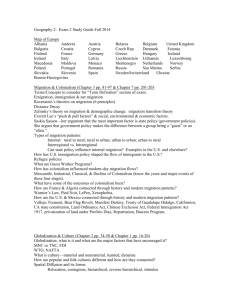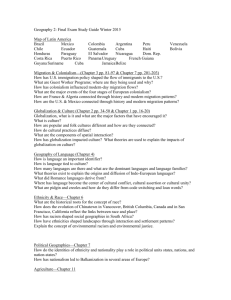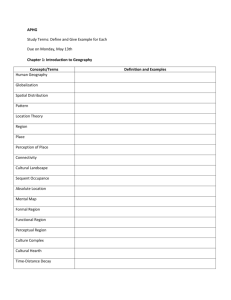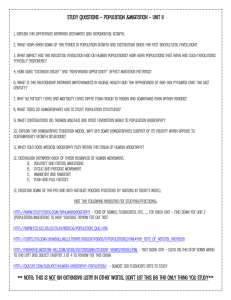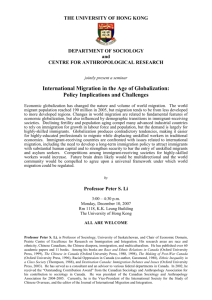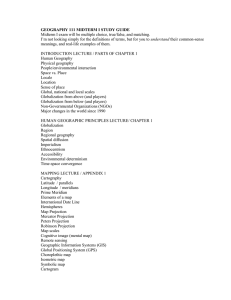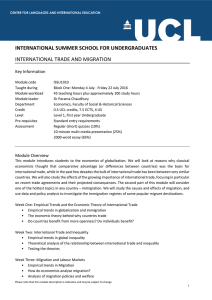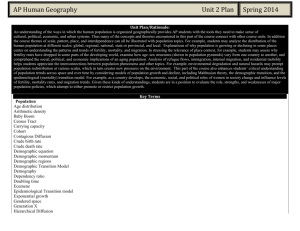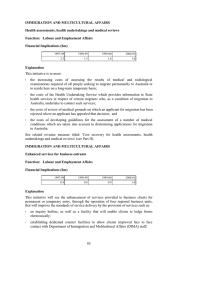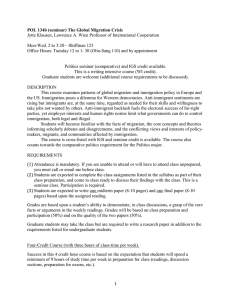Geography 2: Exam 2 Study Guide Migration & Colonialism
advertisement
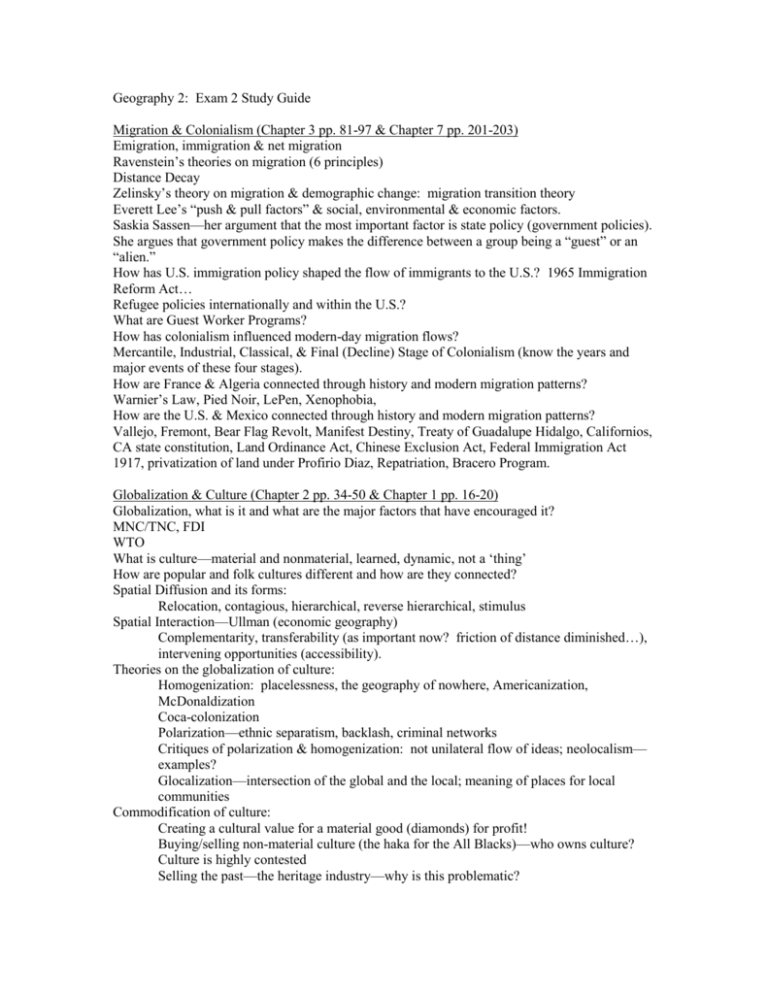
Geography 2: Exam 2 Study Guide Migration & Colonialism (Chapter 3 pp. 81-97 & Chapter 7 pp. 201-203) Emigration, immigration & net migration Ravenstein’s theories on migration (6 principles) Distance Decay Zelinsky’s theory on migration & demographic change: migration transition theory Everett Lee’s “push & pull factors” & social, environmental & economic factors. Saskia Sassen—her argument that the most important factor is state policy (government policies). She argues that government policy makes the difference between a group being a “guest” or an “alien.” How has U.S. immigration policy shaped the flow of immigrants to the U.S.? 1965 Immigration Reform Act… Refugee policies internationally and within the U.S.? What are Guest Worker Programs? How has colonialism influenced modern-day migration flows? Mercantile, Industrial, Classical, & Final (Decline) Stage of Colonialism (know the years and major events of these four stages). How are France & Algeria connected through history and modern migration patterns? Warnier’s Law, Pied Noir, LePen, Xenophobia, How are the U.S. & Mexico connected through history and modern migration patterns? Vallejo, Fremont, Bear Flag Revolt, Manifest Destiny, Treaty of Guadalupe Hidalgo, Californios, CA state constitution, Land Ordinance Act, Chinese Exclusion Act, Federal Immigration Act 1917, privatization of land under Profirio Diaz, Repatriation, Bracero Program. Globalization & Culture (Chapter 2 pp. 34-50 & Chapter 1 pp. 16-20) Globalization, what is it and what are the major factors that have encouraged it? MNC/TNC, FDI WTO What is culture—material and nonmaterial, learned, dynamic, not a ‘thing’ How are popular and folk cultures different and how are they connected? Spatial Diffusion and its forms: Relocation, contagious, hierarchical, reverse hierarchical, stimulus Spatial Interaction—Ullman (economic geography) Complementarity, transferability (as important now? friction of distance diminished…), intervening opportunities (accessibility). Theories on the globalization of culture: Homogenization: placelessness, the geography of nowhere, Americanization, McDonaldization Coca-colonization Polarization—ethnic separatism, backlash, criminal networks Critiques of polarization & homogenization: not unilateral flow of ideas; neolocalism— examples? Glocalization—intersection of the global and the local; meaning of places for local communities Commodification of culture: Creating a cultural value for a material good (diamonds) for profit! Buying/selling non-material culture (the haka for the All Blacks)—who owns culture? Culture is highly contested Selling the past—the heritage industry—why is this problematic? Geography of Language (Chapter 4) Language and place and identity: class, region, country Language is flexible and situational Dialects are mutual intelligible, languages are not Language families Indo-European languages: Kurgan hypothesis vs. Anatolian hypothesis Vulgar Latin and the Romance languages Expansion of languages: political, economic, religious forces/causes Official languages—who has them, who doesn’t, why, UN, EU Loan words Pidgin & Creole languages Lingua Franca Dialect regions (U.S.) Language and culture, can create unity (Israel) or conflict (Belgium), can be used to revive a dying culture (Ireland) and lead to violence and desire for separation (Spain).
